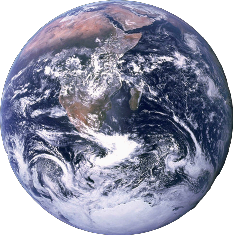
describes the biological aspects of the carbon cycle. To recap, on the right hand side of the cycle, respiration in living cells releases the energy locked up in the carbon based molecules in a regulated and measured way. One byproduct is generally CO2, in turn produced in modest, measured quantities. There is a corresponding powerful chemical process which uses carbon and generates heat and carbon dioxide. In nature it generally takes place in an uncontrolled and fairly destructive fashion in the form of forest and heathland fires. If their scale is large enough they do have a short term impact on the atmosphere both from the smoke they cause and also the CO2 they generate. The counterbalancing forces do allow balance to return eventually. However, it is Man's continuing use of fire on a massive scale which is having a lasting and worrying effect on the biosphere. This takes two main forms: deliberate deforestation and the burning of fossil fuels. Both are important but it is the latter which is of greatest relevance to this stage in our investigation of the delicate biosphere which relies on a well-balanced carbon cycle.
The Industrial Economy
The quite extraordinary arising of the industrial economy over the last two centuries in the West and its spread to the East represents the biggest threat to the balance. In very general terms it would be true to say that the nineteenth century played host to the coal-fired industrial revolution and the twentieth supplemented coal with oil and natural gas. The inconceivably large amounts of CO2this produces, in comparison to the small regulated quantities needed to sustain biological life is pushing the carbon cycle out of balance - hence the level of CO2 in the atmosphere is not only rising but accelerating - this indicates that natural counterbalancing mechanisms are not working. The challenge for the 21st century is to bring control to the increasing CO2 levels and deal with the consequences of this increase in CO2 from our past and current actions and lifestyles.
Returning to the diagram, the additional arrow on the right hand side represents these new man-made chemical combustion processes which use fossil fuels to generate the goods, services and energy we demand. It also can include the energy required to fire the conversion of limestone to quicklime to make cement for the construction industry and its by product, carbon dioxide. The key point about the diagram is that there is no complementary arrow on the left hand side.
All the biosphere has to counteract these increased emissions are two factors of limited effectiveness.
- The first of these is increased activity on the left hand side of the cycle. It has been shown in the USA (Duke Forest Experiment) that plants can grow more quickly in the presence of higher concentrations of CO2 and thereby 'fix' more carbon. However this does not remain fixed for all that long and is likely to end up being decomposed or digested by other organisms in the biosphere. For example a conifer tree in a remote forest may grow for fifty years locking much of the carbon it fixes. However it will die and fall to the ground where it will be digested as food by insects, fungi and microorganisms which will expel the carbon as CO2 and methane.
- The second is natural sequestration enabled by organisms using carbon to produce skeletons containing calcium carbonate. Most typically this will be marine organisms with exoskeletons or shells. For example a mollusc builds a large shell over its lifespan and despite eventually dying or getting eaten the shell will remain chemically intact and will sink to the sea bed with its load of carbon. The carbon therein effectively has been removed from the biosphere - this is sequestration.
The next post looks more closely at the implications of digging up fossil fuels from the subterranean layer.
Read more!





